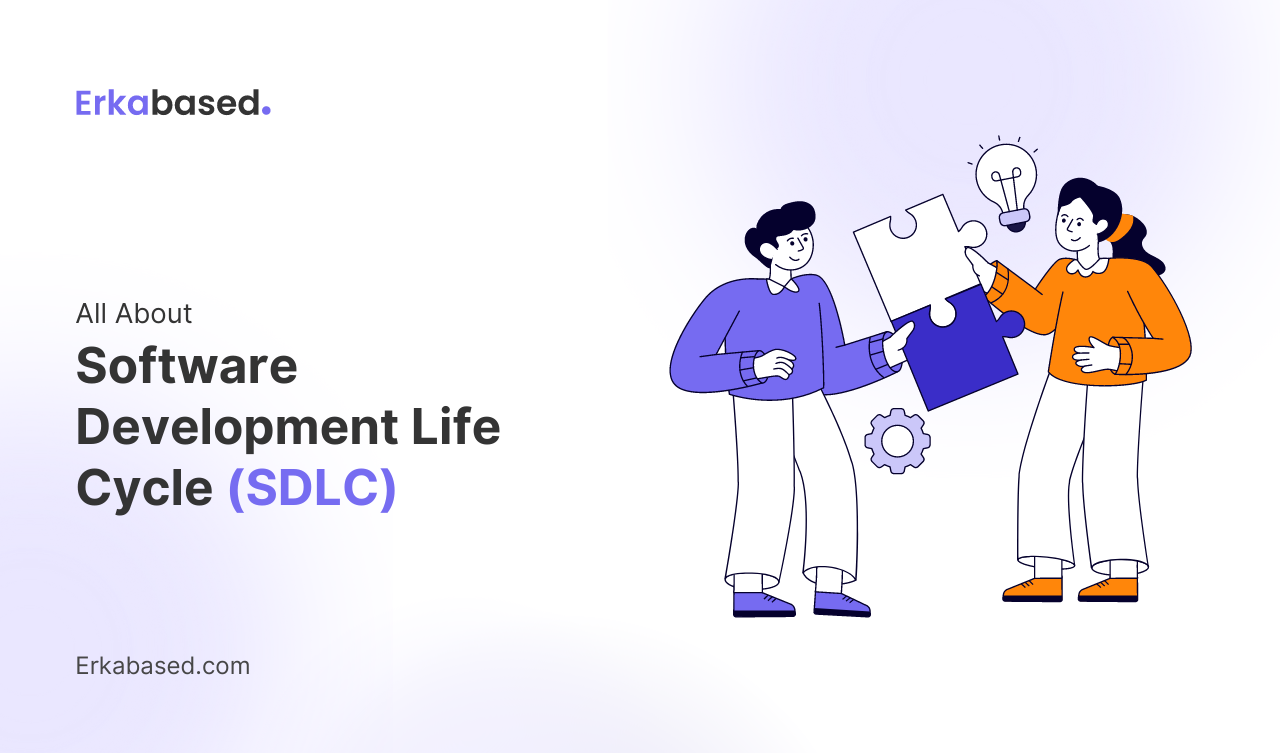Introduction to SDLC
The Software Development Life Cycle (SDLC) is the backbone of any successful software project. It provides a structured approach to software development, ensuring that projects are completed systematically and efficiently. Whether you’re a software developer, a startup founder, a business owner, or a project manager, understanding the SDLC is crucial to delivering high-quality software that meets user needs and stands the test of time.
Overview of the Phases in SDLC
Planning
The planning phase is the foundation of the SDLC. It involves defining project goals, determining the scope, and identifying resources. During this phase, stakeholders collaborate to create a project plan that outlines timelines, budget, and deliverables. Effective planning sets the stage for a smooth development process. This phase also includes risk assessment and management plans to identify potential issues early and mitigate them. Additionally, project managers may establish communication protocols and project governance structures to ensure that all team members are aligned and informed throughout the project.
Analysis
In the analysis phase, requirements are gathered and documented. This phase involves understanding the needs of the users and the business to ensure that the software will address those needs. Techniques such as interviews, surveys, and requirement workshops are commonly used to gather this information. Detailed requirement analysis helps in creating clear and concise requirement documents, which act as a reference for both the development team and stakeholders. This phase may also involve feasibility studies to determine if the proposed solution is viable in terms of technology, cost, and resources.
Design
The design phase translates requirements into a blueprint for building the software. This includes creating system architectures, data models, and user interfaces. Design specifications serve as a guide for developers, ensuring that the software’s structure aligns with the requirements. This phase is typically divided into high-level design (HLD) and low-level design (LLD). HLD focuses on the overall system architecture, including hardware and software components, while LLD dives into detailed designs such as algorithms, data structures, and interface designs. Prototyping and user feedback loops may also occur during this phase to validate design choices.
Implementation
The implementation phase is where the actual coding happens. Developers write code based on the design specifications, using programming languages and tools appropriate for the project. This phase often involves iterative development, especially if following Agile methodologies like Scrum. Code reviews, version control, and continuous integration practices are usually implemented to maintain code quality and manage changes efficiently. Developers also create unit tests to ensure that individual components function correctly. Regular builds and deployments may occur to provide incremental updates and gather feedback.
Testing
Testing is a critical phase where the software is rigorously evaluated to identify and fix defects. Various types of testing, such as unit testing, integration testing, and user acceptance testing, are conducted to ensure that the software functions as intended and meets quality standards. This phase also includes performance testing, security testing, and regression testing to verify that new changes do not introduce new issues. Test cases and test plans are prepared based on the requirements and design documents. Automated testing tools may be used to increase efficiency and coverage.
Deployment
Deployment involves releasing the software to users. Depending on the project, this can include staging environments and phased roll-outs. Proper deployment ensures that the transition from development to production is smooth and minimizes disruptions for users. Detailed deployment plans are created to outline the steps, responsibilities, and timelines for the release. Rollback plans are also prepared in case issues arise during deployment. Post-deployment support is crucial to address any immediate concerns from users and ensure that the software is operating as expected.
Maintenance
The maintenance phase involves ongoing support and updates to the software. This phase is essential for addressing issues that arise after deployment and for making improvements based on user feedback. Effective maintenance ensures the software remains relevant and functional over time. This phase includes regular updates, such as bug fixes, performance improvements, and new features. Monitoring and logging tools are often implemented to track the software's performance and detect issues early. Maintenance also involves updating documentation and providing user training or support as needed.
Importance of Each Phase and Their Role in the Development Process
Each phase of the SDLC plays a unique and critical role in the development process. Planning and analysis ensure that the project is feasible and that requirements are clearly understood. Design provides a detailed roadmap for developers. Implementation brings the project to life through coding. Testing ensures quality and functionality. Deployment makes the software accessible to users, and maintenance ensures its longevity and relevance.
Best Practices for Successful SDLC Implementation
- Adopt Agile Methodologies: Agile frameworks like Scrum promote iterative development, flexibility, and continuous improvement, making them ideal for modern software projects.
- Utilize Tools: Project management tools such as Jira streamline task tracking, collaboration, and reporting, enhancing overall efficiency.
- Conduct Regular Reviews: Regularly review project progress and adjust plans as needed to address any emerging issues promptly.
- Invest in Quality Assurance: Prioritize thorough testing to catch and resolve defects early, ensuring a robust and reliable software product.
- Foster Clear Communication: Maintain open lines of communication among stakeholders to ensure alignment and address concerns swiftly.
Common Challenges in SDLC and How to Overcome Them
Scope Creep
Scope creep occurs when new requirements are added to the project without corresponding adjustments to time, budget, or resources. This can lead to significant delays, cost overruns, and resource depletion, ultimately jeopardizing the project's success. To combat this, establish a clear project scope from the outset, ensuring all stakeholders agree on the deliverables. Use change control processes to manage any additions, which involves assessing the impact of proposed changes, obtaining necessary approvals, and updating project plans accordingly.
Time and Budget Constraints
Projects often face pressure to meet deadlines and budget limits, which can strain resources and reduce the quality of the final deliverable. Effective planning is crucial; this involves creating a detailed project timeline with milestones, allocating sufficient resources, and identifying potential risks. Realistic scheduling should take into account possible delays and buffer times to accommodate unforeseen issues. Regular progress monitoring through status reports and performance metrics helps ensure that the project remains on track and within budget, allowing for timely adjustments if necessary.
Requirement Ambiguity
Unclear or changing requirements can derail a project by causing misunderstandings, rework, and wasted efforts. Investing time in thorough requirement gathering at the beginning of the project is essential. This involves engaging with all stakeholders to understand their needs and expectations, documenting requirements in detail, and obtaining formal sign-off. Keeping communication channels open throughout the project helps clarify and refine requirements as necessary. Regularly revisiting and updating requirement documentation ensures everyone remains aligned and reduces the risk of costly changes later on.
The Future of SDLC: Emerging Trends and Technologies
The SDLC is evolving with advancements in technology and methodologies. Key trends shaping the future of SDLC include:
- DevOps: Integrating development and operations teams to facilitate continuous integration and continuous delivery (CI/CD), resulting in faster and more reliable releases. This approach fosters better communication and collaboration between teams, reduces the time-to-market for new features, and improves overall product quality by ensuring that changes are continuously tested and deployed.
- AI and Machine Learning: Leveraging AI to optimize various SDLC phases, from requirement analysis to testing and maintenance. AI can automate repetitive tasks, identify patterns in large data sets to predict issues before they occur, and optimize resource allocation. For example, AI-driven tools can improve code quality by suggesting improvements, automate test case generation, and provide predictive maintenance insights.
- Microservices Architecture: Breaking down applications into smaller, independent services to improve scalability and manageability. Each microservice can be developed, deployed, and scaled independently, which allows for greater flexibility and resilience. This architecture also supports continuous delivery and deployment practices, as individual services can be updated without impacting the entire application. Additionally, microservices facilitate the use of different technologies and languages for different services, depending on the specific requirements.
Case Studies and Real-World Examples of Effective SDLC Implementation
Agile Transformation at Spotify
Initially, Spotify followed a traditional development model with separate phases for planning, development, and testing. They transitioned to an Agile methodology, adopting the Squads and Tribes model. This shift resulted in improved project visibility, faster delivery cycles, and increased stakeholder satisfaction.
DevOps Adoption at Netflix
Originally, Netflix had distinct development and operations teams that worked in isolation from each other, leading to delays and inefficiencies. They implemented DevOps practices, integrating these teams. The result was a significant reduction in deployment time, increased release frequency, and higher software quality.
Conclusion
Mastering the Software Development Life Cycle is essential for delivering high-quality software that meets user needs and withstands the test of time. By understanding each phase, adopting best practices, and staying abreast of emerging trends, you can navigate the complexities of software development with confidence and expertise. Whether you’re a developer, a startup founder, a business owner, or a project manager, leveraging the SDLC can propel your projects to success and ensure that you deliver robust, efficient solutions that stand the test of time.
Ready to elevate your software development? Embrace Agile methodologies for better flexibility and responsiveness. Use tools like Jira for effective project management, enabling your team to track progress and collaborate efficiently. Stay updated with the latest trends and best practices in the Software Development Life Cycle (SDLC), from planning to deployment. Start mastering the SDLC today for higher quality, faster delivery, and more successful projects. At Erkabased, we specialize in web app and website development aligned with these principles. Let us help you achieve your goals with our expertise and dedication to excellence. Contact us today to take your project to new heights!






